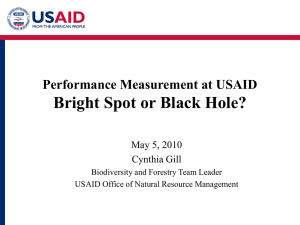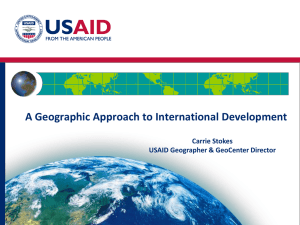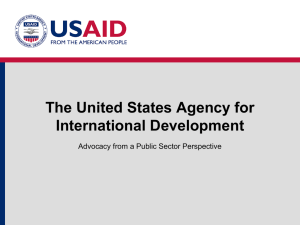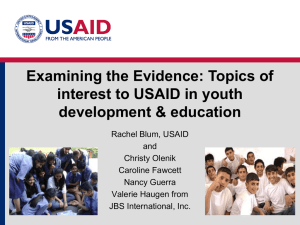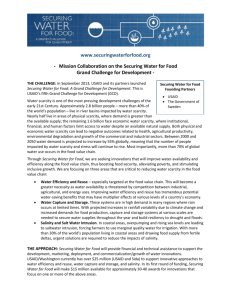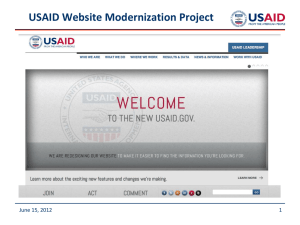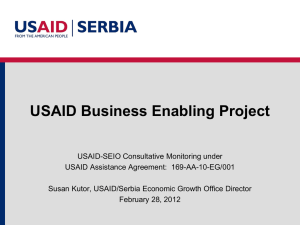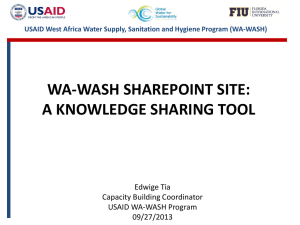m.-CMP-USAID-and-Open-Standards-10-8-14f
advertisement
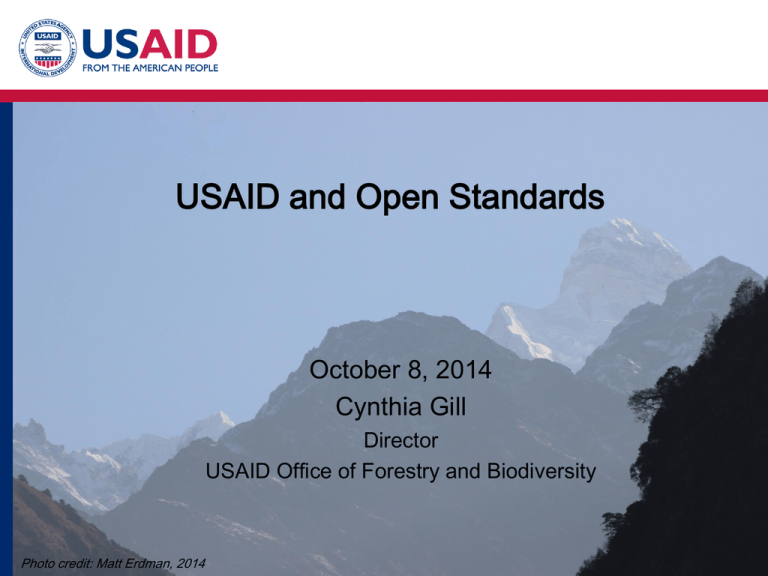
USAID and Open Standards October 8, 2014 Cynthia Gill Director USAID Office of Forestry and Biodiversity Photo credit: Matt Erdman, 2014 Biodiversity @ USAID • USAID is a development agency whose mission is to: Partner to end extreme poverty and to promote resilient, democratic societies while advancing our security and prosperity • USAID invests over $210 million/year in biodiversity conservation • Increased focus on combating wildlife trafficking, anticipate $40 million investment FY14 • New Biodiversity Policy 2014, two goals: – Conserve biodiversity in priority places – Integrate biodiversity as an essential component of human development USAID and CMP • Extensive, fertile debate and discussion of priorities among partners and USAID • Conflicting terms and processes • Came together between 19992002 to develop the Open Standards across institutions Photo credit: Matt Erdman, 2014 Why Open Standards? • Approaches not analysis • Assumptions rather than measurement • Narrow foci • Lack of agreement on funder/implementer goals Photo credit: Matt Erdman, 2014 Moving Toward… • Strategic analysis and design • Integrated programs (with appropriate expertise) • Adaptive management • Quantitative evidence & impact evaluation Photo credit: Matt Erdman, 2014 Early Adaptive Management @ USAID • • • • 2002-2013 Simple version of Open Standards Applied approach to USAID/Washington programs Promoted through – a Biodiversity Handbook for all USAID biodiversity staff – Mandatory trainings – Technical assistance • Main focus on identifying conservation targets, threats, and aligning programs with these priorities in an analytical manner • Some focus on monitoring and evaluation Next Gen Adaptive Management @ USAID • Mapping USAID Program Cycle to Open Standards • Situation models, Theories of Change, metrics • Direct support through Measuring Impact contract to missions with extensive workshops for missions/partners • Working with Policy bureau and testing Open Standards for broader Agency use across sectors Measuring Impact Results to Date • Helping 9 USAID Missions apply the Biodiversity Code, using conceptual models, theories of change, and indicators to inform systematic learning • Improving implementation of conservation approaches by establishing cross-Mission learning programs around shared TOCs • Developing evidence for the contribution of biodiversity to good development outcomes in health and climate adaptation • For each of these areas developing for use by Missions: – Guidance materials – Training modules – Evidence Example: CARPE TOCs • Identify clear and common interventions across landscapes and policy • Link interventions to impact—and articulate assumptions • Define common indicators across partners, and better link monitoring to impact • Articulate the relationship between on the ground program and policy program—in theory and in M&E • Get everyone on the same page—USAID, partners, other USG Opportunities and Challenges Opportunities: • Power of conceptual modelling, especially beyond sector • Context for indicators—towards actual M&E Challenges: • Time-intensive • Process as product • Selling the investment to management Photo credit: Matt Erdman, 2014 Thank You! Cynthia Gill: cgill@usaid.gov Two Similar Processes: USAID Program Cycle & CMP Open Standards ≈
